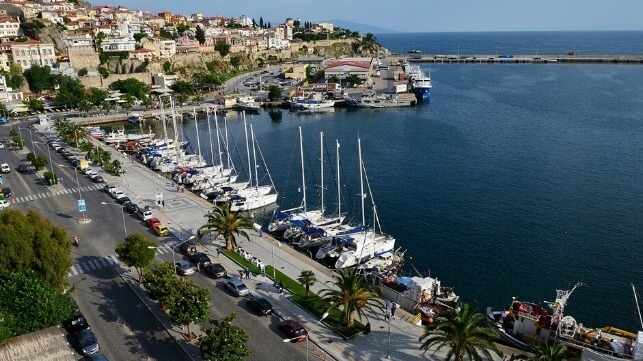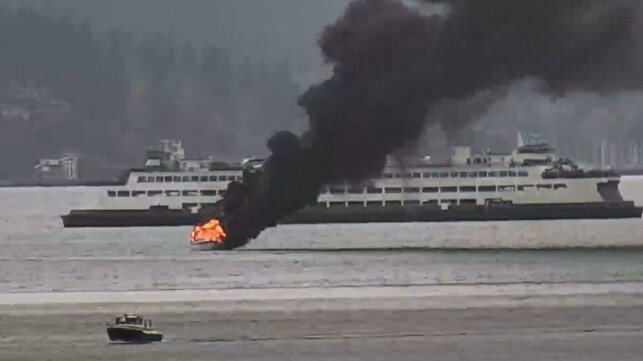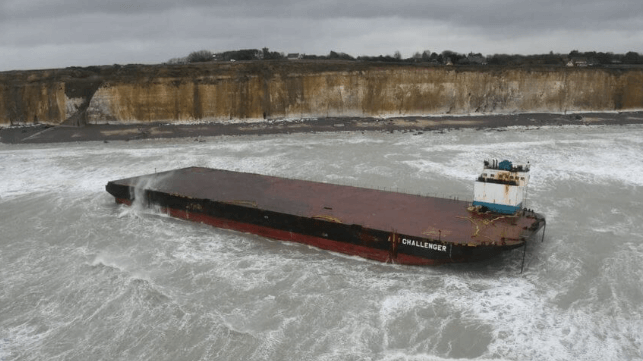Israel Destroys Syria's Navy at the Pier

Overnight Monday, Israeli forces struck Syrian Navy vessels at Latakia and Tartus, destroying the majority of the country's fleet. In a statement, the Israeli Defense Forces took responsibility for the attack and said that it had targeted Syrian assets afloat and ashore "to prevent them from falling into the hands of terrorist elements."
Syria's government and military collapsed under the weight of a rebel assault last week, and former President Bashar al-Assad - an accused war criminal - fled to seek asylum from Russia, his regime's longtime sponsor. Syrian social media accounts are filled with footage of crowds rejoicing in the streets and tearing down symbols of the Assad government.
Israel, which shares a long border with Syria, is concerned about its own security, given the nature of the nation's new leadership. Hayat Tahrir al-Sham (HTS) is a U.S.-designated terrorist organization and a one-time supporter of Al-Qaeda; though it has long since renounced its association with the anti-American terror group, HTS is still an Islamist movement, and its ascendence has been received with wariness in the region.
Israel moved quickly to liquidate the remaining vehicles, aircraft and vessels of the Syrian armed forces, conducting more than 300 airstrikes in the span of 48 hours. According to Israeli analysts, Syria's military no longer exists as a modern, mechanized fighting force.
As part of the brief, intense campaign, the Israeli Navy conducted missile strikes on Syrian naval assets. Drone footage from Latakia shows rows of destroyed Syrian surface combatants; open-source analysts have cataloged at least six destroyed Soviet Osa-II class missile boats, along with one Petya-III class frigate. The Osa-II was designed to carry the Soviet Styx anti-ship missile, an outdated design vulnerable to jamming. Until recently, Syria was known to have 10 Osa-II missile boats in its inventory; they saw action against Israel in 1973, during the Yom Kippur War, with little success. It appears unlikely that they will face Israeli forces again.
Reversal of fortune for Syria's armed forces
Up until its collapse last week, the Assad regime had an informal truce agreement with Israel, explains defense analyst and former British military intelligence officer Jonathan Campbell-James. Under Assad, Israel could intervene militarily to deter Iran and Hezbollah within Syria, so long as it did not interfere with government-aligned units participating in the civil war. The Syrian Navy never had a meaningful role in the conflict, and was never targeted - until Monday.
"The only time there were direct clashes between Israeli forces and the Syrian Armed Forces was when Syria attempted to interdict or intercept Israeli attacks on Iranian or Hezbollah targets, for example with its air defense assets," says Campbell-James. "Under the new HTS regime in Syria, the previous Syrian-Israeli accord could well lapse - albeit it might also be maintained. The Israelis, taking no chances and seeking to mitigate the risk that its border with Syria might become ‘hot’ and confrontational, are therefore seeking to neutralize Syrian assets which in future - if the accord is not maintained - might potentially be used against Israel."
Russians Leave Tartus Naval Base - This Time, Probably for Good

Satellite imagery taken on December 9 suggests that for the second time this week, the Russian Mediterranean Flotilla has left its home base at Tartus. On this occasion, the departure may be permanent.
As previously reported, the ships of the flotilla left Tartus on December 2, ostensibly to conduct a live firing exercise at sea. Several days later, most of the ships returned. Satellite imagery taken on December 9 shows that all vessels have vacated their berths, and also that air defence systems previously deployed to protect the ships in the dock have disappeared.
The imagery showed Kilo Class submarine Novorossiysk (B261), the cruisers Admiral Gorshkov (454) and Admiral Grigorovich (F745), plus the oiler Vyazma at anchor five miles off Tartus. The whereabouts of the oiler Velnya was unclear but she may have departed westwards in the direction of Gibraltar, in company with the cruiser Admiral Golovko (461).
Press statements from the Russian Ministry of Defense claim that they have been in communication with the authorities now in charge in Syria, hoping to secure permission for Russia’s armed forces to remain based both in Tartus and at the airbase south of Latakia at Khmeimim. The claim of such a dialogue appears somewhat fanciful, as a new Syrian government has not yet formed up, and within the last five days Russian aircraft were bombing the advancing Hayat Tahrir al-Sham (HTS) forces - with the Russians at one point claiming to have killed the HTS leader Ahmad al Sharaa in an airstrike. Accusing Ahmad al Sharaa of being a CIA agent and offering sanctuary to Bashar Al Assad and his family will not have helped either. With Russia's potential for continuing interference, the new Syrian administration will be inclined towards having nothing further to do with them.
While the Russian vessels are lying off Tartus in the hope of being able to return, they may have also been prompted to take to the sea by the internal security situation in Tartus. Although both the Tartus and Latakia provinces have a majority Alawi population, the two provincial capitals have substantial Sunni populations. The Alawi Shi’a sect from which the Assad family formerly enjoyed support is centered further inland, in the Nusayriyah mountains between the coastal strip and the Hama-Homs axis.
Moreover, images have been shown on television of crowds tearing down an Assad statue in Latakia (above), and there is also social media footage of an attack on targets in the city’s dockside. Israel claimed responsibility for the strike, which sank at least two Syrian missile boats, and said that it was intended to keep advanced weaponry out of the hands of Islamist factions. Thus for a range of reasons, it would have been a wise precaution for the Russian ships to cast off.
The new Syrian administration appears anxious to be conciliatory, both to quell disputes with internal rivals but also - while weak and disorganized - to avoid antagonizing neighboring countries. None of Syria’s neighbors have reason to welcome a continuation of a Russian presence in Syria, which has served to protect the activities of Iran’s Axis of Resistance and the crescent of Iranian influence through Iraq and Syria to the Mediterranean. The neighboring countries are more likely to make a permanent Russian withdrawal a price for establishing good relations with the new Syrian government.
Nonetheless, the Russians are likely to linger off the Syrian coast for some time in the hope of retrieving at least some form of continued presence. There are also likely to be Russian assets still within Syria, a resource which the Russians might hope to recover, particularly at Khmeimim. The Russian flotilla, without landing ships and a helicopter carrier, is badly configured for conducting a withdrawal or recovery operation.
The hope of the Russians salvaging anything after their 50-year presence in Syria looks remote, and the Russian government, seeking to preserve its influence in the area, will be looking elsewhere in the Mediterranean for someone willing to host them. The harbor at Tobruk in eastern Libya, or the facility at Hariga close by, look the best bet - but would be a risky choice given that Libya remains politically divided and unstable.















